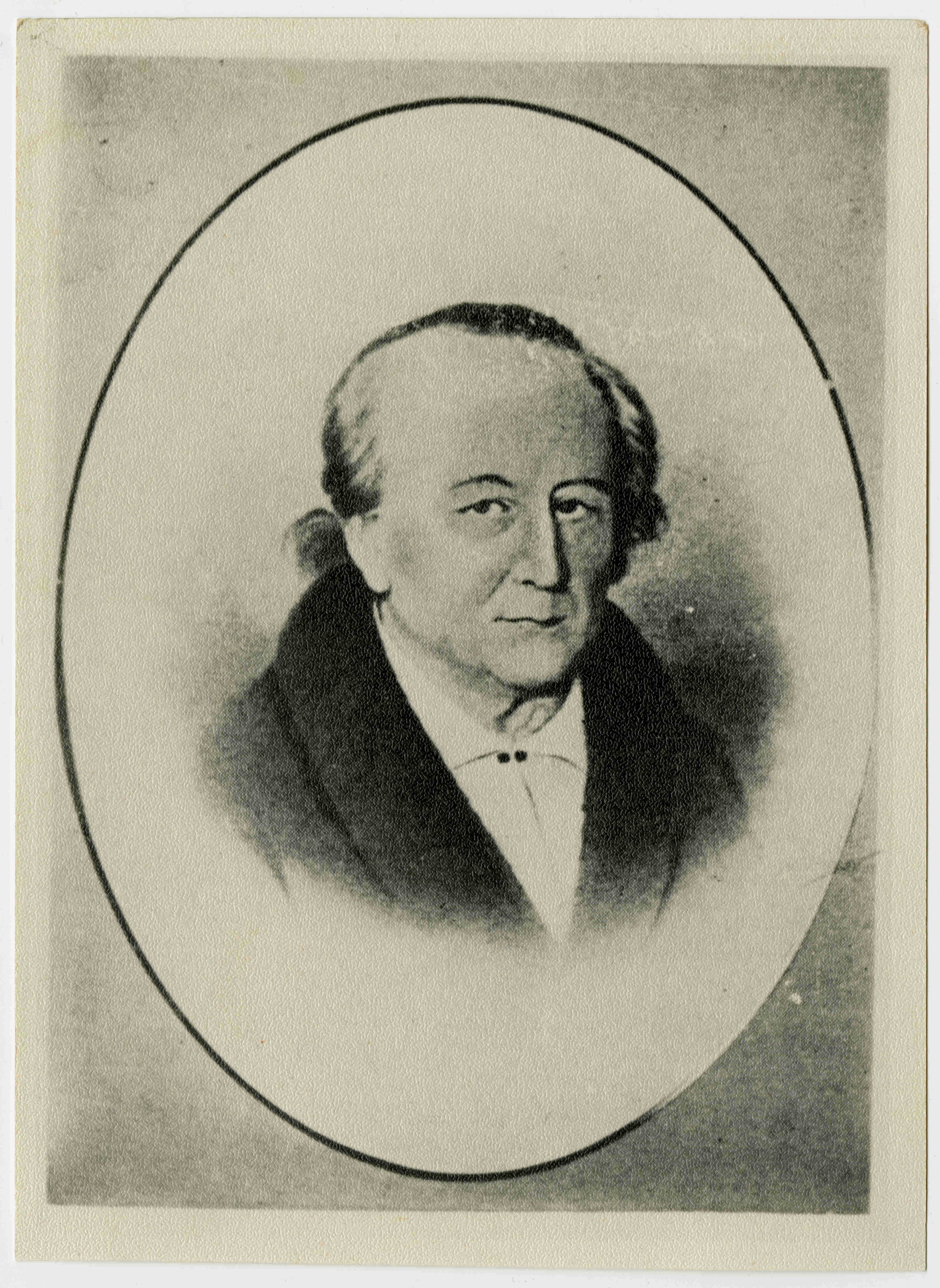
Johann Wilhelm Ludwig von Luce
Johann Wilhelm Ludwig von Luce (1756, according to some sources 1750 – 5. VI / 24. V 1842) was an Estophile of German origin working on Saaremaa island, the author of the first books of prose written in Estonian.
He was born in the little town of Hasselfelde in Lower Saxony, Germany, the son of a postmaster. From 1769 to 1774 he attended Halberstadt dome school, and from 1774 to 1776 studied theology at the University of Göttingen, and in 1777 at Helmstadt. In 1781 he travelled to Saaremaa, where he started as a tutor to the children of O.W. Stackelberg, lord of the manor of Rootsiküla. From 1783 to 1785 he was pastor of the Püha congregation, and thereafter gave up his pastoral duties and bought the manor of Lahetaguse. In 1788 Luce’s first wife died. Since this event was occasioned by the shortage of trained doctors on Saaremaa, Luce himself went to the universities of Göttingen and Erfurt to study medicine (1789-1792). Back in German universities, he became an advocate of the ideas of the Enlightenment, and studied other sciences as well. After completing his studies he came back to Saaremaa and in 1792 acquired the manor of Pilguse. In 1795 he was ennobled. In 1801 he moved to Kuressaare, where he helped to establish a new hospital. Later he kept the Kuressaare town pharmacy. From 1804 to 1820 he worked as an inspector of schools, developing popular education all over Saaremaa. He died at Kaarma, and is buried in Kudjape cemetery.
Luce began as a man of letters with collections of aphorisms in German in the seventeen-eighties. He started studying Estonian soon after settling in Saaremaa in the early seventeen-eighties, since it was necessary for his work as pastor of Püha. His first brochure in Estonian was Juhhataja Piibli ramato sisse (‘Introduction to the Bible’, 1788). In Estonian culture, Luce is known primarily for his work in two parts, Sarema Jutto ramat (‘Book of Saaremaa Stories’, 1807, 1812), which, like other books of the time intended to enlighten the people, offers the peasants didactic teachings about the affairs of the world, and primarily, how to arrange their daily lives better and avoid evils such as drunkenness, theft and plunder. Unlike Luce’s German-language poetry and articles, in which he criticises the backward Baltic-German nobility, the clerical circles and serfdom, in his Estonian texts he admonished the peasantry to obedience. Whereas other contemporary authors such as Arvelius, Willmann or Holtz adapted their enlightening works from German originals, Sarema Jutto ramat is an original creation, based on original characters and events on the island and on the author’s imagination. The work is also more voluminous than its contemporaries. Luce’s language skill was not comparable to the other Estophiles’ at their best, and obviously his dry and matter-of-fact style is the reason why Sarema Jutto ramat did not find great favour among the people, especially outside Saaremaa.
Unlike Arvelius, who was very critical of the Estonian language, Luce was very appreciative of the beauty and expressiveness of Estonian. Luce was one of the main collaborators on Rosenplänter’s journal Beiträge, and ascertained in its columns that in terms of sonority Estonian was more beautiful even than Italian or Spanish. Apparently it was from Luce’s article in Beiträge that the popular folk anecdote arose about a contest of languages in which Estonian is declared the world’s most beautiful language, ahead of Italian, with the sentence “Mine tasa üle silla” (“Go slowly over the bridge”). In 1817 Luce established the Kuressaare Estonian Society, the first literary society in Estonia. The society collected a lot of material for research into the language and folklore of Saaremaa, which unfortunately later disappeared and is now lost. As an offshoot of the Kuressaare society, in 1818 (1819 according to some sources) the Learned Society of Estonia (Eesti Õpetatud Selts), was established to unite Estophile pastors from South Estonia. The activities of both societies petered out, but they inspired the foundation of the Estonian Learned Society (Õpetatud Eesti Selts) in 1838, the germ of the National Awakening. Despite his extolling of the Estonian language, Luce was still not a scholar of the Romantic period, and he tended to favour the Germanisation of Estonians in order to facilitate their transformation into civilised people.
Luce published several writings in German on medical and agricultural themes. Especially toward the end of his life Luce drew a lot of attention to the natural environment of Saaremaa (including its unique flora) and culture, writing several substantial books in German about them.
S. V. (Translated by C. M.)
Books in Estonian
Juhhataja Piibli ramato sisse mis Eesti-ma rahwale kassuks on kirjotanud Johann Willem Luddi Ludse. Tallinn: 1788, 35 lk. [2. trükk: 1789.]
Sarema Jutto ramat, mis ma rahwa lustiks ja kassuks on ülles pannud Johann Willem Luddi Ludse, Kolide üllewataja. Mit Bewilligung der Kaiserl. Censur-Committee zu Dorpat. Mitau: 1807, 192 pp. [2. trükk: 1843.]
Sarema Jutto ramat, teine jaggo mis marahwa rõmuks ja kassuks on. Erzählungen zur moralischen und ökonomischen Bildung der Ehsten, zweyter Theil… ülles pannud Johann Willem Luddi Ludse, Kolide üllewataja. Perno: 1812, 227 lk. [2. trükk: 1843.]
Terwisse Katekismusse Ramat: Se on nisuggune ramat, kus sees küssides ja kostes öppetakse, kuida innimenne woib ja peab omma ihho terwist hoidma ja selle pärrast hoolt kandma. Selle ramato on esmalt Saksa kele, Ma rahwa heaks, kirjotanud Johan Willem Luddi Ludse, arst ja kolide üllewaatja Kurresare linnas. Pärrast on selle ramato ma kele ümberkirjotanud Kusto Hinrik Schmidt, Waljalla koggodusse öppetaja ning kirriko kohto wannem Sare-maal. Tallinn: 1816, 147 lk.
Nou ja abbi, kui waesus ja nälg käe on. Tallinn: 1818, 32 lk.
Marri-pu-aia ehhitamissest. Trükki antud Juhh. Henr. Rosenpläntrest, Perno-kihhelkonna öppetajast. Tallinn: [J. H. Rosenplänter], 1818, 16 lk. [Tõlkinud Abram Holter J. H. Rosenplänteri kaasabil.]



